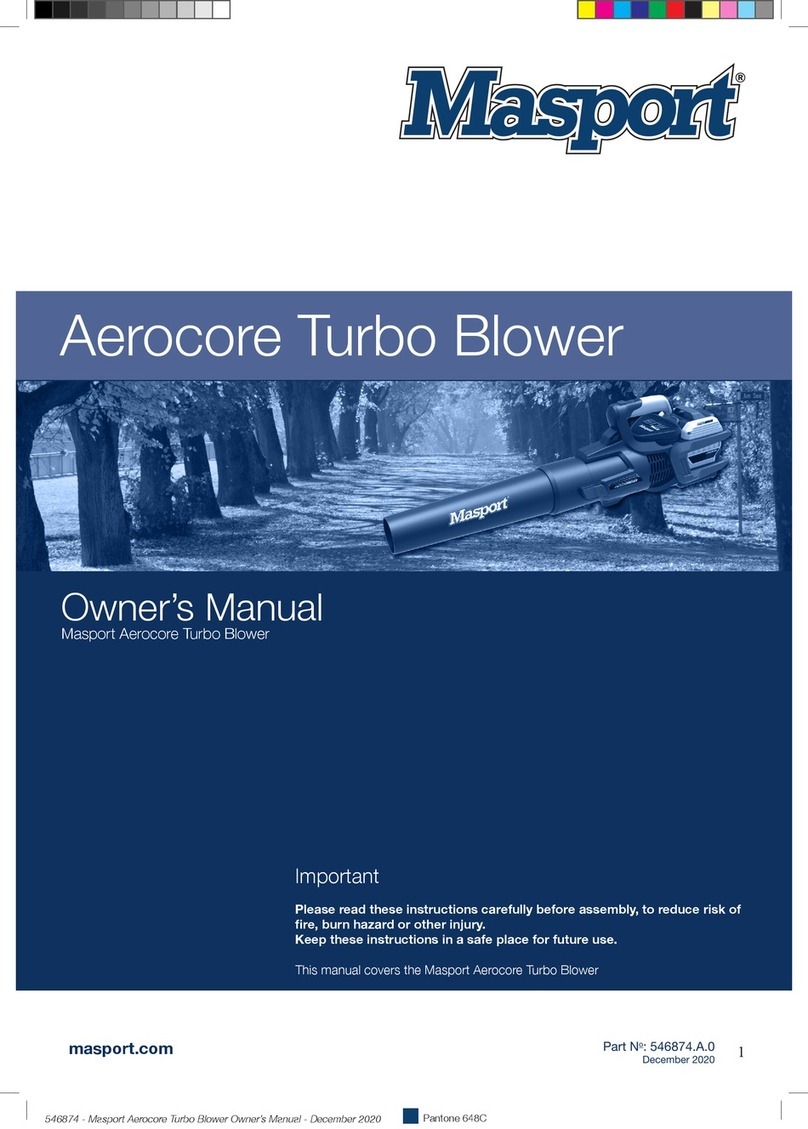
5
A moment’s inattentiveness when using the
power tool can result in serious injury.
■ Wear personal protective equipment, and
always use safety goggles. The injury risk
can be reduced by wearing personal
protective equipment such as a dust mask,
non-slip safety shoes, long trousers, a
protective helmet and ear protection,
depending on the type and application of the
power tool.
■ Avoid starting to operate the machine
inadvertently. Ensure the switch is in the
off-position before connecting to power
source and/or rechargeable battery,
picking up or carrying the tool. Accidents
can be caused by leaving your finger on the
switch when you carry the power tool or
when you connect it to the power supply.
■ Remove the adjusting tools or spanner
before you switch on the power tool. A
tool or spanner that is in a rotating part of the
machine can cause injury.
■ Avoid an abnormal body posture. Make
sure you can stand safely and keep your
balance at all times. This will enable you to
control the power tool better if something
unexpected happens.
■ Wear suitable clothing. Do not wear baggy
clothing or jewellery. Keep your hair,
clothes and gloves away from moving
parts. Loose clothing, jewellery or long hair
can be snagged on moving parts.
3.1.3 Using and handling of the electrical
tools
■ Do not overload the power tool. Use the
appropriate power tool for the job you are
doing. Using the appropriate power tool will
enable you to work more effectively and
safely in the specified performance range.
■ Do not use a power tool if it has a
defective switch. A power tool that can no
longer be switched on or off is dangerous
and must be repaired.
■ Disconnect the plug from the socket and/
or remove the rechargeable battery before
you make adjustments to the appliance,
change replacement tool parts or put the
appliance away. This precautionary
measure will prevent the machine from
starting inadvertently.
■ Keep unused power tools out of the reach
of children. Do not allow people to use the
power tool if they are not familiar with it or
have not read these instructions. Power
tools are dangerous if they are used by
inexperienced people.
■ Look after power tools and the insertion
tool with care. Check whether moving
parts function perfectly and do not stick,
whether there are any broken parts or
parts that are damaged in such a way that
the function of the power tool is impaired.
Have damaged parts repaired before
using the power tool. Many accidents are
caused by failure to maintain power tools
properly.
■ Keep cutting tools sharp and clean.
Carefully maintained cutting tools with
sharper cutting edges are less likely to stick
and are easier to control.
■ Use power tools, accessories, insertion
tools, etc. according to these instructions.
When doing so, take account of the
working conditions and the activity to be
undertaken. Using power tools for
applications other than the intended purpose
can result in dangerous situations.
■ Keep the grips and grip surfaces dry,
clean and free from oil and grease.
Slippery grips and grip surfaces prevent safe
operation and control of the power tool in
unforeseen situations.
3.1.4 Safety in the workplace
■ Keep your working area clean, and make
sure it is well illuminated. Untidiness or
dimly lit working areas can lead to accidents.
■ Do not work with the power tool in a
potentially explosive atmosphere with the
presence of flammable liquids, gases or
dust. Power tools give rise to sparks that can
ignite the dust or vapours.
■ Keep children and other people away from
the power tool when using it. If you are
distracted, you may lose control of the power
tool.
3.1.5 Use and handling of the
rechargeable battery-operated tool
■ Only recharge batteries with chargers that
are recommended by the manufacturer.
Using a charger intended for one particular
type of rechargeable battery with a different
type of rechargeable battery represents a fire
risk.






























